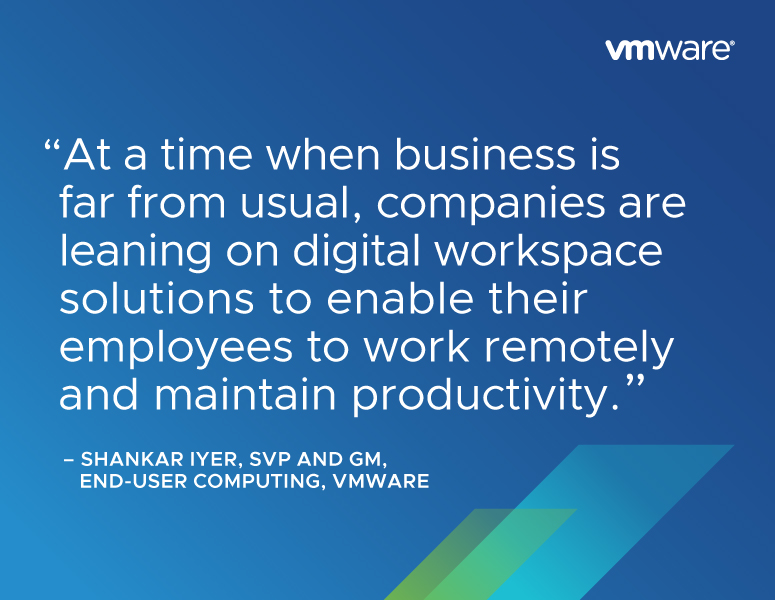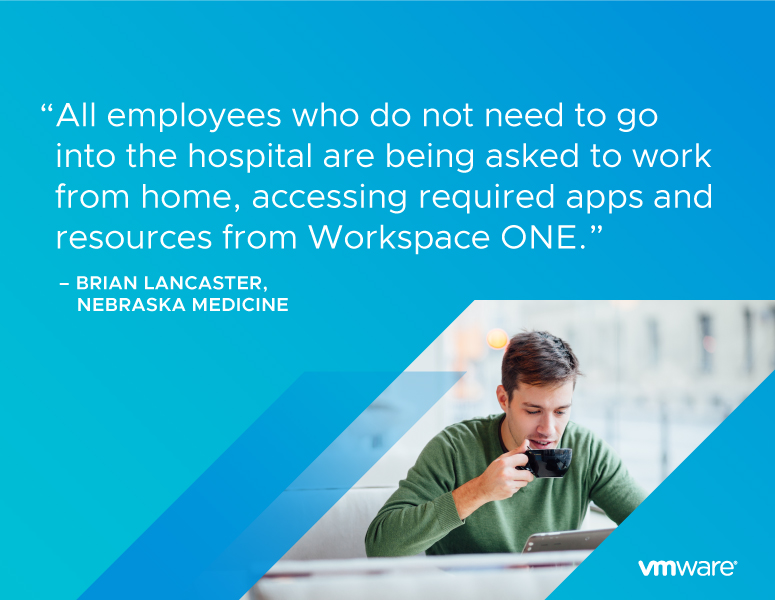When a significant work disruption—be it a natural disaster, security breach or global pandemic—strikes, effective business leaders quickly pivot from “business as usual” to a new reality. It forces teams to hone in on top priorities and innovate new ways of working together to achieve them.
This is especially true today, as many companies now suddenly have a fully remote workforce. For businesses enabling a remote-first experience, the good news is that investments will continue paying off long after business disruption fades.
The Value of Digital Employee Experience
Today, we’re seeing just how important it is to be able to provide employees with a positive digital experience as they work outside of the office. However, providing a great digital experience, which includes enabling remote work, has long been on the minds of IT and HR leaders at companies competing to attract and retain the best talent.
Mark Zigadlo, vice president of technology and security services at Cofense, explains:
When I started to build a remote-first strategy for our company, I wasn’t thinking about a global pandemic.
"I was really just thinking about being able to hire the right talent in the right places and provide a similar experience to somebody who might be based in Japan as somebody that's based in our corporate offices.”
One digital employee experience that Zigadlo and his team aimed to improve was employee onboarding. After nearly doubling its workforce in a year by onboarding approximately 250 staff, Cofense saved its IT team hundreds of hours in configuration time alone, ultimately speeding up the time it took to get new employees up and running.
A Necessity for Today, An Investment for Tomorrow
The key to enabling a remote-first culture is providing employees with everything they need at their fingertips. This requires an investment in digital workspace technology that makes the experience of accessing apps from anywhere on any device intuitive and frictionless.
Brian Lancaster, CIO of Nebraska Medicine, says, “Several years ago, our IT team adopted the strategy of ‘anywhere, anytime, technology transforms.’ And last year, we achieved a key milestone where we enabled basically everyone across our different businesses to be able to teach, learn, conduct research and provide care via online channels.”
Nebraska Medicine operates a healthcare network that covers metro Omaha and extends across the region. It also has a research and education organization, the University of Nebraska Medical Center (UNMC).
In the wake of COVID-19, Nebraska Medicine professors and students now log into their digital workspace to access apps to run all classes, including labs, in a virtual environment. And for Nebraska Medical Center, all employees who do not need to go into the hospital are asked to work from home, accessing required apps and resources from their digital workspace.
“The investment we made in our digital workspace strategy is certainly helping us maintain continuity and deliver better care in these extraordinary times,” says Lancaster.
Investing in a remote-first culture will continue to benefit both employees and employers once individuals return to the office.
“When this is all over, there are going to be some companies that, for whatever reason, whether it be regulatory or some other reason, can't necessarily support full time work-from-home policies,” says Zigadlo. “But that doesn't mean adopting a remote-first culture isn't useful. Adopting this mentality can help IT staff feel more confident supporting employees that work across geographically dispersed offices, for instance.”
Building A Remote-First Culture Goes Beyond Technology
Technology is only part of a successful remote work equation. After all, it doesn’t matter what technology you have if employees don’t trust it or don’t have a good experience using it.
“If you look at our users—clinicians and professors—they’re not using the technology because they want to,” shares Lancaster. “In fact, if you do a quick search on ‘physician burnout,’ accessing electronic medical records and technology usage are high on the list of culprits. For us, educating our users about the benefits, addressing concerns regarding privacy and ease of use, and articulating a process for a smooth rollout were just as important, if not more so, than the technology.”
Lancaster describes a 6-9 month period when he and his chief information security officer went office-to-office to address questions related to the technology his IT team would use to enable remote work and bring-your-own-device programs. This part of the roll-out (communication, assurance and support) required an investment of time, but it’s time Lancaster feels was more than well spent.
“How we used to enable remote access was a horrible user experience and was always in the top five IT helpdesk escalations,” Lancaster says. “Our improved process only takes a couple clicks to get users working remotely, providing them with an experience similar to what they are used to with online banking. Once employees began having this improved experience under the new method, we started seeing a shift from concern to people telling their peers to do it, because it was easier and better.”
Helping Employees Adjust to a New Normal
As more employees work from their homes—perhaps for the first time in their careers—IT teams play a critical role in helping employees adjust to this new normal.
At Nebraska Medicine, Lancaster and his team stood up several online resources to help professors adjust to teaching classes to medical students in a virtual environment.
“In addition to making sure professors knew where they can find tips related to installing and using the technology, we added resources on how to run an effective online meeting, strategies for adapting curriculum to a virtual environment and how to run a virtual lab. We’re leveraging best practices from across our organization to create a digital knowledge base to help staff adjust to their new working realities,” Lancaster says.
A Workforce Forever Changed
While the timeline for when people will start heading back to the office is unclear, many agree that this experience forever changed the way employees and companies view remote work.
Lancaster says, “I believe very strongly that work is what you do, not where you go. And I think we should continue to have spaces that facilitate that. It could be private spaces like a home office, or it could be community spaces for collaboration, where needed. The point is providing employees with the freedom to choose.”
Lancaster and Zigadlo shared additional insights on how, when and why to invest in a remote first culture during The Future of Employee Summit, presented by VMware and CMSWire. Watch it here.



